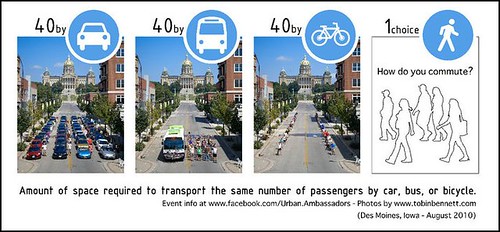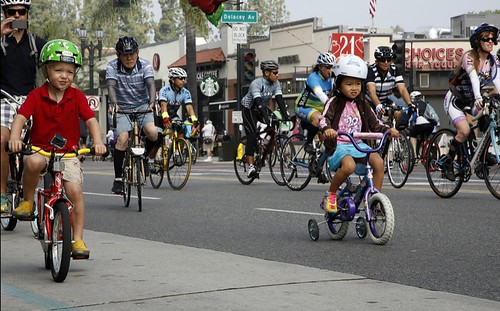Intellectually pure vs. compromise: roads, bridges, tolls, and transit and Northern California
Ex-DC resident, blogger and advocate Geoffrey Hatchard now lives in Northern California and has kept up his transpo advocacy via various acts including stirring the pot via Twitter.
He came out against a proposal to support a road-heavy transportation funding proposal for Northern California, based on the theory of induced demand--that congestion tends not to end when new highway lanes are added, because demand grows at a rate that absorbs the new capacity.
But his tweets managed to stir up the proponents, including Carl Guardino, a Silicon Valley mover and shaker (who'd be termed part of that area's Growth Machine).
 A proposed “Southern Crossing” would carry more than just cars in this architectural rendering of a proposed new bridge, just one of several transportation improvements imagined as part of a “mega” funding measure.
A proposed “Southern Crossing” would carry more than just cars in this architectural rendering of a proposed new bridge, just one of several transportation improvements imagined as part of a “mega” funding measure.But looking at the proposal ("A multi-billion-dollar ‘mega measure’ to fix Bay Area traffic for good heading your way," San Jose Mercury News), I'm reminded of the line "better to not let the perfect be the enemy of the good" which always pissed me off when tossed at me by various Smart Growth proponents, although I'd argue some projects, perfect is way better, that certain compromises are unjustifiable. Here I don't think that is the case. From the article:
“People are wasting hours of their life in traffic,” said Gabriel Metcalf, the president and CEO of SPUR. “Conversations started all over the Bay Area asking the question, can we do something at a bigger scale than we have done before? Big enough to actually solve the problem? Big enough to actually get us a different regional transportation system than we have today?”First, we have to accept that the headline of the SJMN article is over the top. Because of induced demand, motor vehicle congestion can never be "fixed for good" because by definition a mobility system based on the car uses space poorly--a 40 foot bus carries between 40 and 60 people and takes up the room of three cars and those three cars usually carry from 3 to 5 people.
Securing passage of Regional Measure 3, the proposed $3 toll increase on most bay bridges, is the first step, Metcalf said. But it’s a small one paving the way for a much bigger ask: A “mega measure” to fix traffic in the Bay Area for good — or at least for the foreseeable future.

Amount of space required to transport the user the same number of passengers by car, bus, or bicycle.
From the article:
It’s too early to specify what transformative projects Bay Area residents can expect as part of this mega measure, said Carl Guardino, president and CEO of the Silicon Valley Leadership Group. However, early conversations have shed some light on the direction it might take.But this proposal is interesting in that it is built on adding tolls to area bridges, and using the monies not just to expand roads and bridges, but also transit and to put transit on the proposed South Bay Bridge.
The plan would almost certainly include a major expansion of train service for BART and Caltrain, said Jim Wunderman, president and CEO of the Bay Area Council. First on the list is a second tube, or bridge, for BART, which would allow 24-hour service, minimize the impact from a massive earthquake wiping out the existing Transbay Tube, and provide relief for trains bottle-necking in West Oakland. That tube could include Caltrain, or there could also be a new bay crossing, likely a bridge, to carry Caltrain, high-speed rail, or both, along with cars, Metcalf said.
There could be a vast network of toll lanes ringing the bay and radiating to the north, east and south, he said. They would run parallel to or even share lanes with buses. In turn, those buses, which will one day likely be autonomous, would cruise along at much faster speeds because they would be separated from single-occupancy cars, Metcalf said.
There could be dramatically expanded ferry service, and better access to the North Bay, he said.
“It’s really important to connect to the North Bay,” Metcalf said, “whether that means expanded ferry service or connecting to the SMART train. It seems like a good opportunity.”
Is that an acceptable compromise?
I would say that it is, but that the proposal isn't good enough, even if it's an important start.
Get the toll, link it to a strong sustainable mobility program, before the Measure goes on the ballot, not after.
Splitting sustainable mobility advocates into pro- and anti- camps is not a good idea. It's also dangerous to split sustainable mobility advocates into pro and anti factions, something that has marked the failure of transportation funding measures in other areas, such as Georgia ("Failure of the transit-roads sales tax measure in Metro Atlanta," 2012 blog entry) over arguments about equity, roads vs. transit, etc.
Clearly a split is developing, given Geoff's tweets and the position of SPUR in the pro-camp, SPUR, the San Francisco Planning and Urban Research Association, normally is considered a pro-sustainable land use and transportation organization.
Create a sustainable mobility master plan and get it included as part of Measure 3. What sustainable mobility advocates should do is build a master program for improving the sustainable mobility network, and aim to get "the full program" included/funded with the proposal.
Remember, sustainable mobility is more than "merely" transit, what I used to call the "mobility shed" but now call the sustainable mobility platform, including biking, walking, placemaking improvements, car sharing, and other elements.
Note that the Bay Area is already ahead compared to the DC region, because the SF Bay Metropolitan Planning Organization, the Metropolitan Transportation Commission, is one of the nation's most innovative transportation planning organizations.
Models for what I am thinking about are what I've proposed in conjunction with the DC area Purple Line light rail program:
-- "Setting the stage for the Purple Line light rail line to be an overwhelming success: Part 2 | proposed parallel improvements across the transit network"
and what could have been done in association with the Silver Line heavy rail Metrorail extension in Northern Virginia:
-- "Using the Silver Line as the priming event, what would a systematic transit network improvement program look like for NoVA?."
I also have a similar piece that is half-written but unpublished for Southern California in association with the Olympics.
Although LA MTA has just released its own list ("LA Metro lists 28 traffic, train projects it wants done by 2028 Olympics," Pasadena Star-News), my proposed program includes elements that go beyond LA County, to Orange and San Diego Counties, and Tijuana in Baja California, Mexico, plus HSR.
I'll have to finish it before the end of the year.

CiCLAvia is held a few times each year, in various LA County locales. It is common for there to be at least 100,000 participants for each event, which is a great base on which to build a stronger program for transportational biking. LA Times photo by Katie Falkenberg.
San Diego's bike program is a preeminent example of my recommendation that "action planning for bicycling as transportation" include strong branding and identity systems.
For example, one of the points I will make in my SoCal list is setting a minimum regional goal of 10% transportational trips by bicycle.
... by building on LA County's CicLAvia program--the nation's most successful "Open Streets" program, a variety of biking as transportation programs in LA County and by LA MTA, which sponsors both CicLAvia and the area's largest bike share program, and is building great bike hubs at transit centers, including Union Station ("New Metro Bike Hub at Union Station is now open"), and SANDAG's great "Go by Bike" bicycle master plan and infrastructure and programming development program.
Labels: bicycle and pedestrian planning, change-innovation-transformation, public realm framework, sustainable mobility platform, transit, transportation planning, urban design/placemaking




0 Comments:
Post a Comment
<< Home